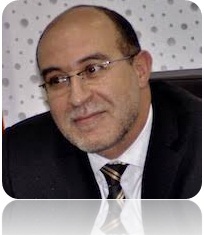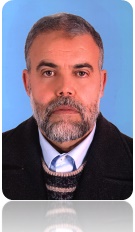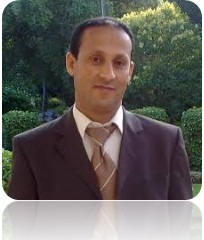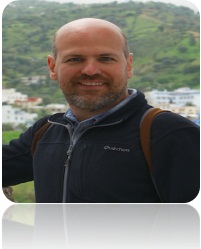 |
JSSA'19 : 3ème édition de la Conférence Internationale Journées Scientifiques en Sciences Appliquées
15-16 févr. 2019 Larache (Maroc)
|
Conférenciers
|
Pr. Badr ABOU EL MAJD CeReMAR, LMSA Laboratory ,Faculty of Sciences, Mohamed V University, Rabat, Morocco abouelmajd@fsr.ac.ma / abouelmajd.b@gmail.com
|
Ingénierie Concourante en Optimisation de Forme Multi-disciplinaire
En bureau d’études, les problèmes d’optimisation que soulèvent les concepteurs de systèmes complexes sont par nature multicritères. Par exemple, en optimisation de forme aérodynamique pour la conception d’avions commerciaux, on s’intéresse simultanément au critère de portance dans les phases critiques du décollage ou de l’atterrissage, au critère de traînée en régime de croisière, qui affecte la consommation et le rayon d’action, ainsi qu’à d’autres critères liés à la stabilité ou la manœuvrabilité de l’engin, et à des critères de fabrication, etc. Par conséquent, l’évaluation de tels critères exige, dans les modèles de haut niveau, la simulation numérique efficace de plusieurs écoulements par les techniques d’approximation des équations de la mécanique des fluides, typiquement par volumes finis. Enfin, l’aérodynamique est généralement couplée à d’autres disciplines, le calcul des structures, l’acoustique, la thermique, etc., ce qui pose des problèmes difficiles de couplage en optimisation multidisciplinaire. Mais le couplage multidisciplinaire en optimisation peut également revêtir une autre forme : dans le cas de deux, ou plusieurs disciplines soumises à un jeu commun de paramètres de conception, comment optimiser ces paramètres pour prendre en compte concurremment de critères antagonistes issus de ces disciplines ? On se focalise plus particulièrement sur ce type de problématique, quelquefois référée sous le terme d’ingénierie concourante.
|
|
Pr. Mohammed SEAID School of Engineering and Computing Sciences, Durham University, United Kingdom
|
Generalized Enriched Finite Element Methods for Transient Partial Differential Equations
Generalized enriched finite element methods are presented for solving time-dependent partial differential equations. This includes applications in heat transfer, diffusion in heterogeneous media, and convection-dominated flows. To integrate the equations in time we consider a class of linearly implicit schemes in the finite element discretization. As enrichment procedures, we consider a combination of exponential expansions to be injected in the finite element basis functions using coarse meshes. The proposed method shows an huge reduction in the number of degrees of freedom required to achieve a fixed accuracy compared to the conventional finite element method. In addition, the proposed generalized enriched finite element method shows a stable behavior in treating both internal and external boundary layers in time-dependent partial differential equations. The performance of the proposed method is also assessed for the numerical simulation of heat transfer and convection-diffusion problem. Three-dimensional simulations are also presented in this contribution for which comparisons to the conventional finite element method are analyzed. |
|
Pr. Abdelaziz NASROALLAH Cady Ayyad University - Faculty of Sciences Semlalia, LIBMA: Ibn-al-Banna Laboratory of Mathematics and Applications, Marrakesh, Morocco
|
Monte Carlo Simulation and Markov Chains
The Markov Chains class is one of important families of mathematical tools in the modeling and study of random systems (phenomena). The spatial and temporal complexity of the current systems makes the modeling Markov chains complex (by their large state spaces and by their stiffness) to the point that an analytic study becomes difficult or even impossible. Monte Carlo simulation methods are an alternative that can simulate the behavior of such Markov chains and derive interesting estimates for the performance measurements of the studied systems. The complexity makes the Monte Carlo simulation time expensive. A lot of mathematical research are carried in order to improve the stochastic algorithms used to reduce the simulation temporal problem. Variance reduction techniques are produced in order to reduce the simulation time without affecting the quality of the proposed estimators. Among these algorithms, we are interested in the Coupling From The Past (CFTP) algorithm. When applied, the CFTP helps to ensure that a Markov chain has reached his stationary regime and consequently it is possible to sample from the exact steady state probability. We will present and discuss some problems and recent contributions around the CFTP algorithm.
|
|
Pr. Mostafa EZZIYYANI Department of Computer Science, Faculty of Sciences and Techniques of Tangier, Abdelamalek Essaâdi University, Tangier, Morocco
|
Transformation numérique et apprentissage automatique, leviers principaux pour la nouvelle génération des systèmes intelligents
La transformation numérique est un sujet d’actualité qu’il peut être difficile de le limiter. Son impact sur toutes les sphères des nouvelles technologies est tel qu'il n'est pas toujours facile de prendre en compte ses effets réels sur les processus de prise de décision et de production. Nos activités de recherche mettent le point sur le sujet en abordant un point clé de la transformation numérique via des sujets de recherche de haut niveau. Par conséquent, nous exploitons la puissance de la technologie d’intelligence artificielle, du datamining, du système d’aide à la décision, de l’apprentissage automatique et de la science des données pour trouver des solutions de qualité à l’ère numérique dans différents domaines. Ainsi, nous proposons une vaste expertise technologique dans divers domaines verticaux, tant au niveau fondamental que pratique. En effet, l'accélération des développements, tant technologiques que sociaux, impose de nouvelles approches commerciales, presque révolutionnaires, mais toutes doivent incorporer l'inévitable ingrédient qu'est la donnée. L'Internet des objets, les réseaux sociaux, les applications mobiles et d'autres technologies génèrent une quantité inégalée de données non structurées. Ces volumes de données inimaginables hier encore, révolutionnent tous les secteurs d'activité. Ils influencent l'organisation des entreprises, génèrent de nouveaux risques tout en offrant de nouvelles opportunités. Les données et leurs utilisations constituent aujourd'hui un avantage concurrentiel stratégique qui doit être valorisé. Dans ce contexte, nous proposons par exemple la solution via un nouveau système intégré dans plusieurs domaines prioritaires.
|
|
Pr. Mabrouk BENHAMOU Faculty of Sciences, University of Moulay Ismail, Meknes, Morocco
|
Mathematical approach to the study of the diffusion phenomenon within the complex systems
Diffusion is a natural process occurring in the so-called complex systems, such as liquids, solids, biological media, ecological environments, population dynamics, and so on. The common feature is that, the walker (nanoparticle, colloid, individual,...) executes a random trajectory. Two equivalent approaches are used to study the diffusion process: Diffusion equation and Langevin equation. In this talk, we choose the Langevin equation method and report on its applications to compute the stochastic properties of the walker that moves at random. We finish by an extension of the study to the diffusion on curved spaces.
|
|
Pr. Delfim F. M. TORRES Coordinator of the R&D unit CIDMA (Center for Research and Development in Mathematics and Applications), Department of Mathematics, University of Aveiro, 3810-193 Aveiro, Portugal
|
Mathematical modeling with time scales and its application in epidemiology
We investigate an epidemic model based on Bailey's continuous differential system. In the continuous time domain, we extend the classical model to time-dependent coefficients and present an alternative solution method to Gleissner's approach. If the coefficients are constant, both solution methods yield the same result. After a brief introduction to time scales, we formulate the SIR (susceptible-infected-removed) model in the general time domain (including the continuous, the discrete, and hybrid cases) and derive its solution. In the discrete case, this provides the solution to a new discrete epidemic system. The last part is dedicated to the analysis of the limiting behavior of susceptible, infected, and removed, which contains biological relevance.
|
|
Pr. Saad MAZEN Président du Conseil Scientifique Laboratoire de Mathématiques Jean Leray Département Info/Math Tiret jaune mail Centrale Nantes, Nantes, France
|
Numerical methods for nonstandard multipahse flows in porous media
The main purpose of this presentation is to shed light on recent advances on multiphase flows in porous media using nonstandard constitutive laws as the Darcy-Brinkman flow and dynamic capillary model. In the first part, we are interested in the displacement of two incompressible phases in a Darcy-Brinkman flow in a porous media.The equations are obtained by the conservation of the mass and by considering the Brinkman regularization velocity of each phase. This model is treated in its general form with the whole nonlinear terms. This work deals with construction and convergence analysis of a combined finite volume- nonconforming finite element scheme together with a phase-by-phase upstream according to the total velocity. In the second part, the dependence of capillary pressure-saturation curves on the history of the flow is known as capillary pressure hysteresis. So, for non-equilibrium conditions, the phases pressure difference can be written as a combinaison of static capillary pressure and the saturation rate. We investigate a TPFA (two points flux approximation) finite volume scheme to approximate the solutions of the nondegenerate two-phase flow with dynamic capillary pressure. The proposed finite volume scheme is written in a general form as a discrete variational formulation. Finally, a monotone DDFV scheme is introduced to approximate degenerate parabolic equations arising from porous media flows.
|
| Personnes connectées : 1 | Flux RSS |

|







